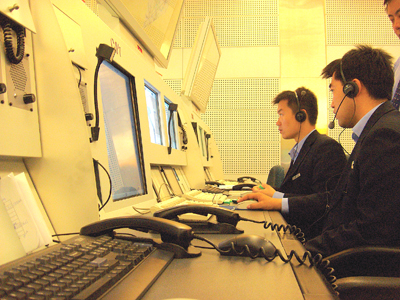INDIAN ARMED FORCES CHIEFS ON OUR RELENTLESS AND FOCUSED PUBLISHING EFFORTS

The insightful articles, inspiring narrations and analytical perspectives presented by the Editorial Team, establish an alluring connect with the reader. My compliments and best wishes to SP Guide Publications.

"Over the past 60 years, the growth of SP Guide Publications has mirrored the rising stature of Indian Navy. Its well-researched and informative magazines on Defence and Aerospace sector have served to shape an educated opinion of our military personnel, policy makers and the public alike. I wish SP's Publication team continued success, fair winds and following seas in all future endeavour!"

Since, its inception in 1964, SP Guide Publications has consistently demonstrated commitment to high-quality journalism in the aerospace and defence sectors, earning a well-deserved reputation as Asia's largest media house in this domain. I wish SP Guide Publications continued success in its pursuit of excellence.
Chinese Realism

China has 863 airliners—more than twice that of India. Also, Beijing can boast of an ultramodern international airport, which India is expected to get only after two years.
Powered by robust economic growth, India and China have in the last five years emerged as the fastest growing aviation markets in the world. In India, the market has more than doubled in the period 2003 to 2007. From a figure of less than 100 in the beginning of this century, the number of airliners in the country has increased to around 400. In this period, the number of airports handling scheduled flights has increased significantly and connectivity to the northeastern parts of the country has jumped from 87 to 287 flights per week—a 230 per cent rise.
As against a global average of 5 per cent during 2007, domestic passenger traffic in India grew at 32.5 per cent and international traffic at 15.6 per cent. Similar growth rate was registered in the three years preceding. However, the unprecedented rise in the price of international oil prices seems to have introduced an element of uncertainty in the future course of the growth story of Indian civil aviation. But analysts believe that the setback is temporary. Oil prices are likely to settle at more realistic levels, taxes may be rationalised and the economy, which is the primary driver of the aviation industry, will readjust to the new price levels. Hopefully then, it will be business as usual.
Despite the fact that air travel may be somewhat more expensive than it is now for the leisure traveller, it would be reasonable to expect that air traffic will continue to grow albeit at a slightly lower rate—in any case, at a pace faster than the world average. It is estimated that the annual rate of growth of air traffic would be around 12 per cent up to 2010 and at 9 per cent up to 2015. The most recent estimates from Boeing pegs the requirement of airliners in India at 911 worth $86 billion (Rs 4,03,520 crore). Although India has emerged as the ninth biggest aviation market in the world, it is the least penetrated for air travel—lower than even Sri Lanka, Pakistan, Ethiopia and Nigeria.





